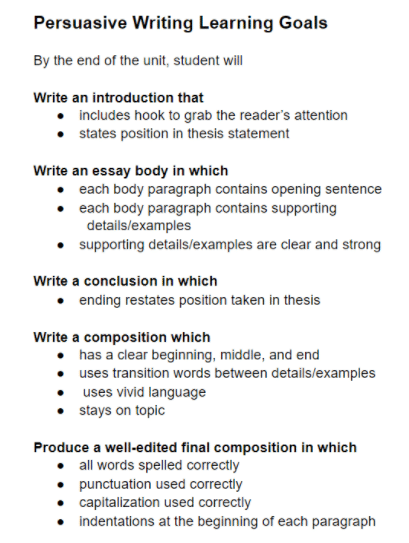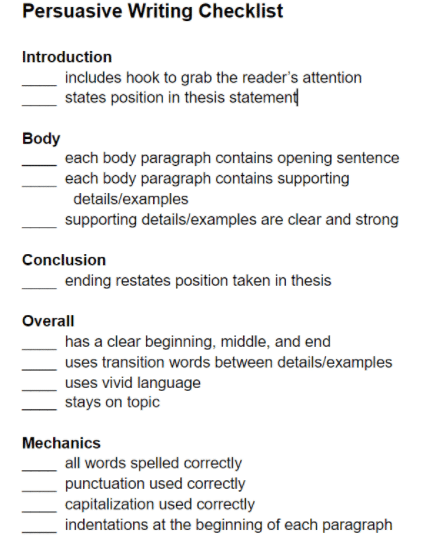Homeschooling comes with many challenges, and tracking student progress is at the top of the list for many homeschool parents. You want your students’ hard work and your diligent teaching efforts to pay off! Some days you may feel on top of your game, but other days you may wonder if you’re just spinning your wheels. Feeling a sense of accomplishment is important in maintaining motivation for teacher and student alike. It’s vital to find a system for tracking student progress that works for you and your students.
Ways to Track Student Progress
Goals and Objectives
The first step to tracking progress is setting learning goals (also known as learning objectives or learning targets). Before beginning a new unit, it helps to figure out what you want your learner to know and to be able to do by the end of the unit. When taking a road trip, most people wouldn’t just hop in the car and hope to get somewhere. Instead, you decide on a destination and figure out the best route to get there. It’s the same in education. First and foremost, you have to know where you’re going. Mapping out the knowledge and skills you want your learner to acquire will provide focus as you plan lessons and activities. It will also allow you to know when the student has reached the goal. The process doesn’t have to be complicated. A simple checklist will do. To get the most out of goal-setting, follow these tips:
Set goals that are specific and measurable
Think about this learning goal: “The student will develop an appreciation for literature.” While, of course, most teachers hope to cultivate a love of reading, this is a learning goal that is difficult to measure. How will the teacher know when the student appreciates literature enough for the learning goal to be met? Instead, a more specific goal might be “The student will know the characteristics of a short story.” This goal is much more instructive for both the teacher and student because it sets a specific target that the teacher can measure. Of course, that doesn’t mean that the teacher won’t strive to instill an appreciation of literature.
Set goals with a timeline in mind
As you set your goals, try to estimate how long it will take for your learner to reach that goal. For instance, we might add to the statement above: “The student will know the characteristics of epic poetry, short stories, and novels by the end of the fall semester.” Of course, your timeline can always be adjusted if needed, but setting time-related goals will help you determine the pacing of your lessons.
Discuss learning goals with the students
Be sure that the students know what the learning goals are for each unit. This helps the students maintain focus and monitor their own learning. Give the students a copy of the learning goals and ask them to self-assess from time to time to get a clearer idea of how well they are understanding the material.
Set goals that are realistic and attainable
This one is important! You want to maintain high standards that challenge your learner. At the same time, if you set the bar too high you and your learner will end up feeling frustrated and demoralized. Consider factors such as age, ability, and any learning challenges as you set learning targets. Check out the example below.

Formative Assessments
“Formative assessment” has become a popular buzzword in education. Don’t let the name scare you. Chances are that you’re already very familiar with formative assessment in practice. It refers to the act of informally testing a student’s knowledge and skills as they’re learning. By using formative assessments, teachers can quickly determine whether their students understand what has been taught in a lesson. This allows the teacher to know when to reteach and when it’s okay to move on to the next learning objective. When used in its purest sense, formative assessments should not be graded activities. Instead, their purpose is to guide instruction. Here are just a few common methods of conducting formative assessments:
Informal Questioning
As you explain concepts, you can ask your students questions to make sure that they understand the material. For instance, if you are presenting a lesson about right triangles, you might ask the learner to explain how to identify the legs and hypotenuse. This method works well with any learner, but it especially appeals to auditory learners.
Dry-Erase Board Work
Dry-erase boards are an excellent tool for having your students demonstrate what they’ve just learned. Using the previous example, if you wanted to check for understanding, you might have your learner draw and label the parts of a right triangle. This mode of formative assessment is most effective with visual learners.
Exit Ticket
Exit tickets are an effective way to measure whether an individual lesson has been successful. At the conclusion of the lesson, you might ask your learner to write the answers to 1 – 3 questions on a small slip of paper that serves as their “exit ticket” from the lesson. This helps the teacher to know whether to move on to the next concept or to present the information in a new way in the next lesson. Plus, it’s a lot less stressful for the student than a pop quiz!
Checklists and Rubrics
As the end of a unit approaches, students should have an opportunity to demonstrate the knowledge and skills that they’ve gained. Teachers should plan assessments that are closely aligned with the learning goals they developed at the beginning of the unit. In fact, many homeschool teachers simply convert the learning goals into a checklist. For older students, teachers might devise a rubric based on the learning goals. By aligning end-of-unit assessments with the beginning-of-unit goals, teachers can ensure that their students are making academic progress.
Look at the checklist below and notice how it uses the same wording as the learning goals in the previous example.

Before and After Student Writing Samples
A student favorite for tracking progress is the before and after writing sample. At the beginning of a school year or semester, have your student write a paragraph or an essay without any coaching. Put the sample in a safe location. At the end of the year or semester, have your student write another paragraph or essay with the same prompt as before. Compare the end-of-year sample with the beginning-of-year sample to see how the writing has improved. Be sure to include your student in the activity so that he or she can be amazed at how much progress has been made.
Student Work Portfolio
Another way to track student progress is to keep a portfolio of the student’s best work over the course of one or even several academic years. This is a good way to see how the student’s general writing, mathematics, and/or research skills have developed over the long-term.
Standardized Testing
While not every state requires homeschoolers to take standardized tests, many homeschool families willingly opt in to testing in order to measure their students’ progress. Standardized testing allows parents to see where their children measure in relation to their peers. It also demonstrates a student’s academic growth from year to year. In some states, local school districts are required to provide opportunities for standardized testing to homeschool students residing in the district. Another option is for parents to purchase testing from private companies.
Standardized testing can provide relevant information about student learning, but it’s important to remember that this kind of assessment only provides a narrow view of the student’s skills and abilities. Some students have difficulty with test-taking for a variety of reasons. It’s important to use a varied approach when tracking student progress.
Resources Offered by Curriculum Companies
Some curriculum companies offer additional resources to help parents track their homeschool student’s progress. When researching curriculum, check to see what additional support and materials are available to help assess and monitor student learning. Using pre-made assessment and tracking materials rather than making your own is a big time saver. Plus, you can be assured that the assessments line up well with the curriculum and that your record-keeping is accurate.
Assessment/ Resource Booklet
Some homeschool curriculum companies, like Essentials in Writing, offer an additional assessment booklet that parents can use to check student progress and retention throughout the academic year. This allows parents to see if students are learning and retaining the material from unit to unit. Using assessments from the curriculum company makes it easy for the homeschool teacher to see which concepts their students have mastered and which need more work.
Scoring Services
One of the biggest challenges for many homeschool parents is assessing their child’s progress in writing, especially when the student reaches middle school and high school. Teens don’t always respond well to criticism from a parent. Additionally, some parents don’t feel they have enough expertise to evaluate their student’s writing at the secondary level. Luckily there are a few companies, like Essentials in Writing, that offer scoring services that provide rubric-based evaluations and specific feedback on student writing for every writing unit. By purchasing scoring services, the homeschool teacher can get a clear picture of how their student is progressing over the course of the school year.
What to Do if your Student Isn’t Progressing
It’s wonderful when progress checks and assessments indicate that the student is mastering the material, but what about when signs point the other direction? It’s inevitable that occasionally students won’t show mastery of all the learning objectives. It’s up to the homeschool teacher to give their students more opportunity to learn the material.
Re-Teach
If assessment indicates that a student didn’t master all the learning objectives in a particular unit, the homeschool teacher must re-teach the missed objectives. It helps if the teacher can use a different approach to the material. The flexibility that homeschooling provides makes this an easy process. In traditional school settings, the student must often attend tutorials outside the school day in order to attend re-teaching sessions while also keeping up with new material that is presented in class. In a homeschool setting, the teacher can delay the start of a new unit until the student can demonstrate mastery of the previous unit. Once the re-teaching phase is completed, the student should be re-assessed to be sure that he or she has learned the material.
Pre-Teach
If a student frequently requires re-teaching, it might be a good idea for the homeschool teacher to do more pre-teaching. Pre-teaching, also known as front loading, is the process of preparing the student to learn. For example, if a student is about to begin a research project, the homeschool teacher might begin with some lessons on how to use databases and how to navigate the public library. Or, if a student is beginning a unit on cellular biology, the teacher might begin by teaching the vocabulary so that unknown words do not hinder student understanding of later lessons. Pre-teaching requires a little extra time at the beginning of a unit, but it is well worth it.
If you’re looking for a complete homeschool writing curriculum, consider Essentials in Writing. Offering complete writing courses for grade levels 1 – 12, EIW launches students to new heights in their writing and takes the burden off the homeschool parent. EIW has it all: engaging writing prompts, short-but-sweet video lessons that model the writing process step-by-step, graphic organizers, rubrics and checklists, and more.
Essentials in Writing offers free consultations with certified, experienced educators to their customers, so you can feel assured that your students are progressing and find solutions to any concerns that may arise. In addition, they offer add-ons such as the Assessment Resource Booklet and Scoring Services so that you never have to wonder how your student is progressing.
Check out the EIW Placement Test today to find the perfect level for your homeschool student.


